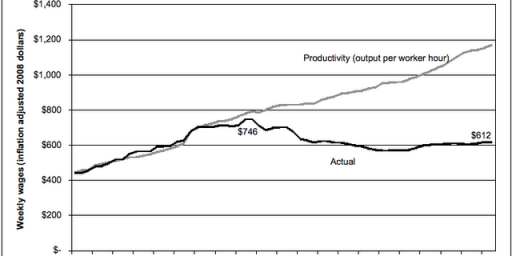Let There Be Light
David Hobstetter argues that we’re paying a heavy price for bad architecture:
The slowly improving economy has meant an increase in office construction, but companies don’t seem to be getting it. There is a striking lack of understanding by CEOs, boards and corporate real-estate executives that designing buildings with greater access to daylight saves money and improves productivity and the bottom line. The poster children for this illuminating trend–from Manhattan skyscrapers to commercial buildings in suburban California and urban Shanghai–are simply too few and far between.
We pass the vast majority of our time indoors, and more than half of the work force spends much of it parked in front of computer screens. The steady increase in chronic work-related illness, including repetitive stress injuries, asthma and cardiovascular disease, suggests that our artificial environments are hazardous to workplace productivity.
The evidence is mounting. Two recent Dutch studies, for instance, revealed that a significant percentage of sick leave can be linked to complaints about the quality of the workplace. A healthy indoor climate, by contrast, was shown to lead to a 2.5% drop in absenteeism. Though this decrease may seem small, consider that over a building’s typical 30-year life span the corresponding increase in productivity would more than match the initial outlay for a building’s design and construction.
Perhaps the most powerful findings concern windows. Beginning in the late 1960s, a design trend emerged from the thought that windowless buildings, illuminated solely by fluorescent lights, minimized distractions, prevented eyestrain, and created greater energy efficiency. New research reverses these assumptions, asserting that windows providing daylight and an ample view can dramatically affect mental alertness, productivity and psychological well being. Furthermore, a 2003 study of office-worker performance conducted by the California Energy Commission found exposure to daylight was consistently linked with a higher level of concentration and better short-term memory. A 1999 study by Pacific Gas & Electric Co. of 108 retail stores found that those with skylights boasted 40% higher sales than those without them. What’s more, designing for “daylighting,” as the strategies are known, also offers opportunity to improve energy efficiency.
It seems rather obvious to me but clearly not to building designers. The combination of a lack of sunlight, bad ventilation systems, and windows that don’t open even if they exist is a bad one.





